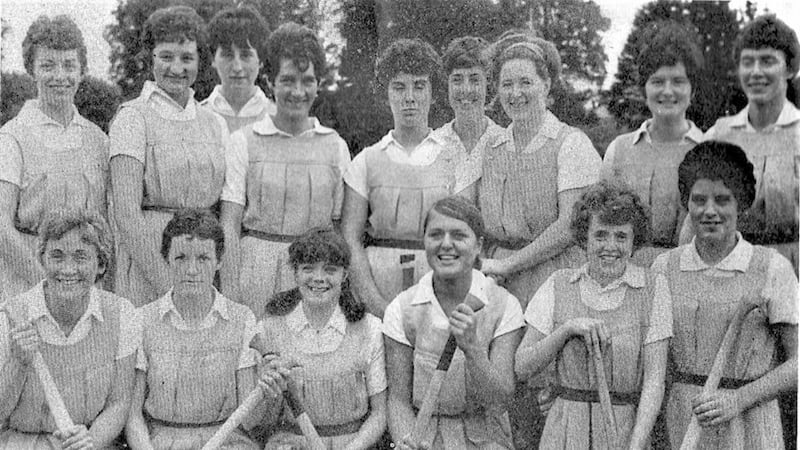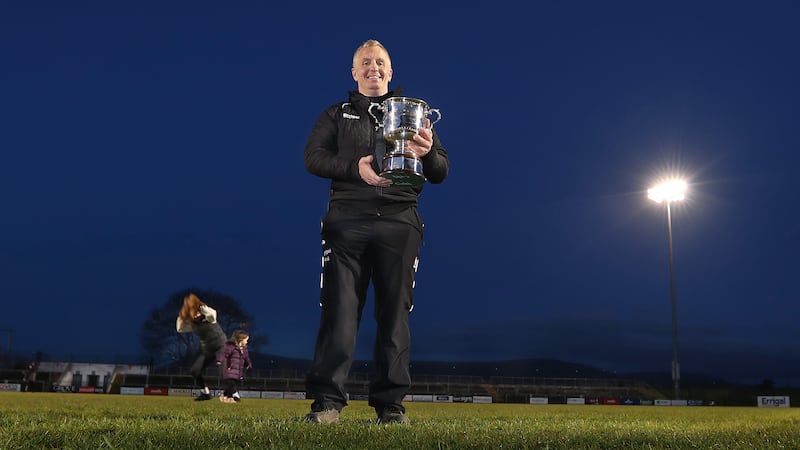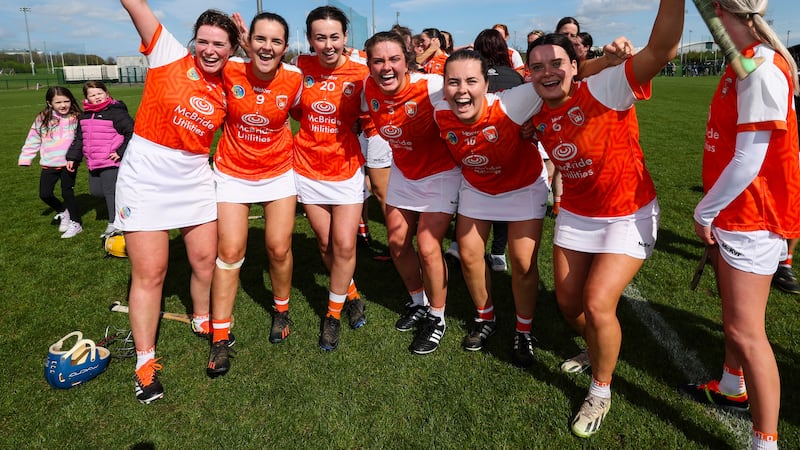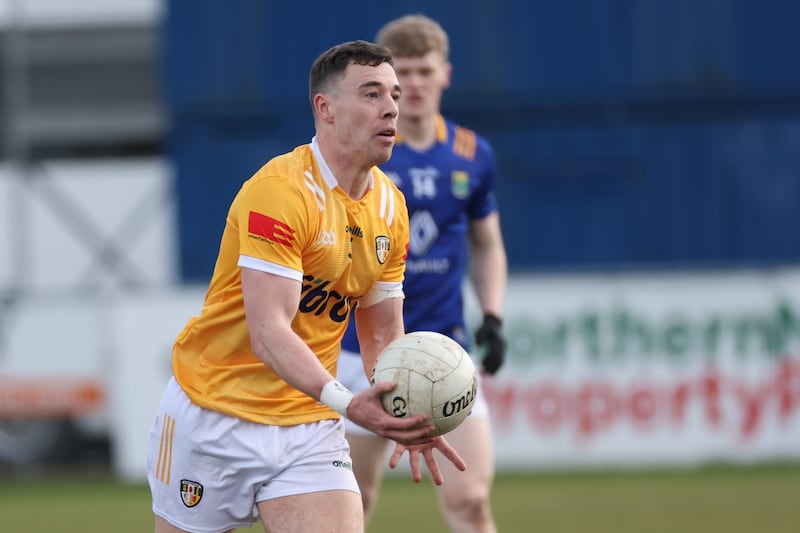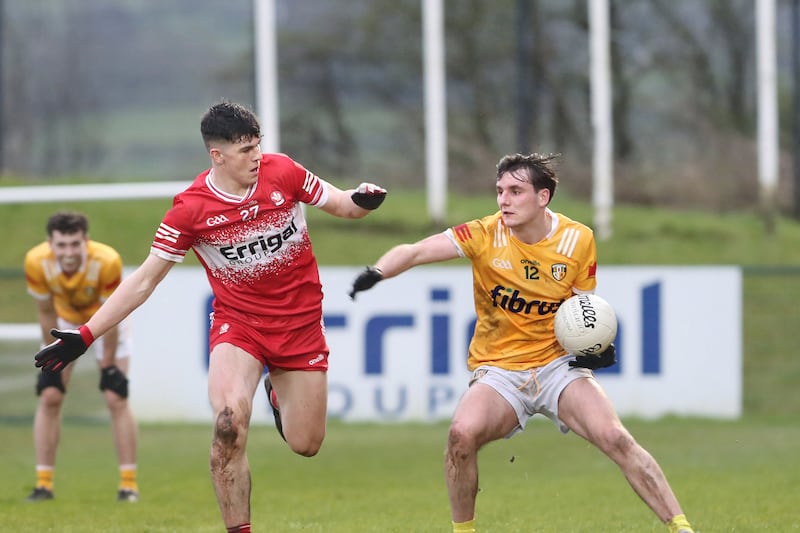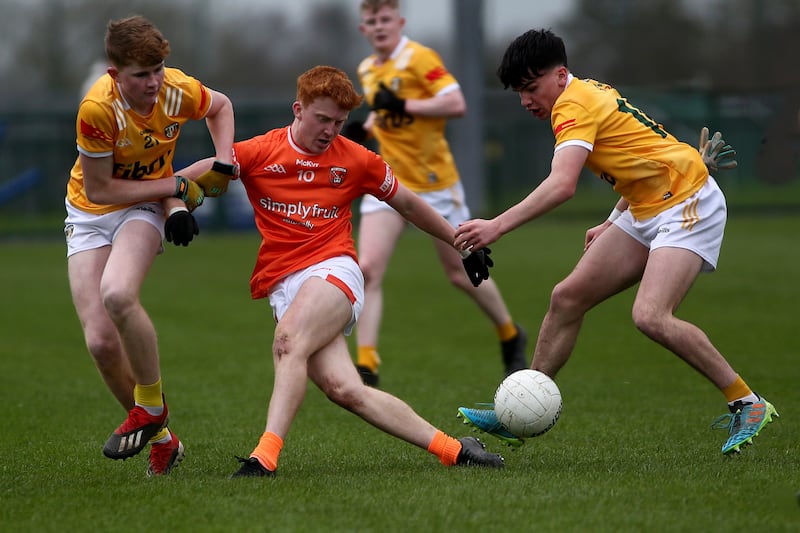LILY Scullion played camogie for Antrim and Ulster for just over a decade, during which she won ten Ulster titles, appeared in Croke Park six times for All-Ireland senior finals, although only one of those was successful.
She also belongs to a very small group of players who won Ulster titles with two different clubs.
Career-wise Lily was a farmer after she left school, before entering Gallaher’s factory in Ballymena and then moving on to youth work in both Newry and Ballymurphy in the late 70s.
Later this month it will be 40 years since she took a weekend trip to Waterford that changed the course of her life. Three months after that trip, she entered an enclosed order of nuns and has been in St Mary's Abbey, Glencairn, Co Waterford ever since.
And by the way, she has been managing the order’s 250 acre farm for the past 13 years!
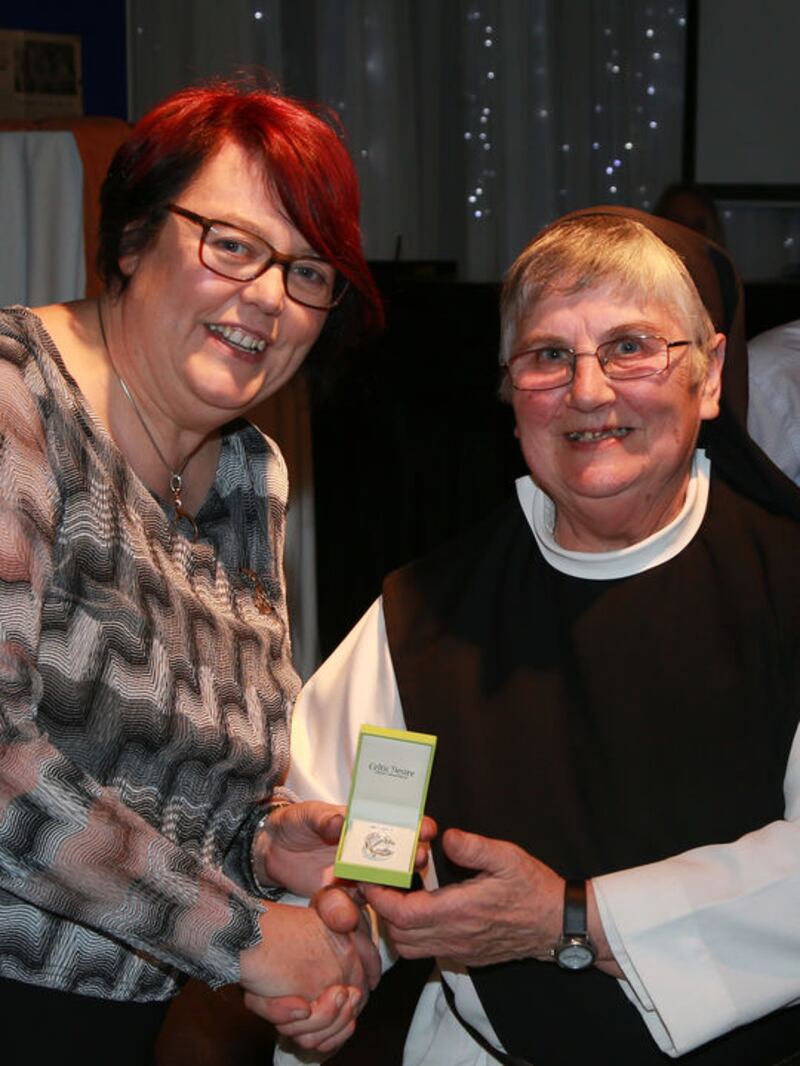
Lily Scullion hadn’t a notion of becoming a nun until her mid 30s.
“Growing up I was no more religious than any many other young people brought up on a small farm in rural county Antrim. My main career ambition was to work in agriculture. Apart from that, camogie was my life.
"Even when I was at school I was more interested in farming than books, I liked nature, the animals, there is a certain sense of freedom in farming.
"But when my mother died, my father felt farming wasn't a job for a girl. I had a couple of jobs and was working in Gallaher’s when I got into conversation with a priest at a family wedding.
“He suggested youth work to me and directed me to a Youth Officer Training Course in Ballymena. I was two weeks into that when Fr Anthony Davies from Newry sent me a message. He knew me through camogie, heard that I was interested in youth work and offered me a job right away. So that was me off to Newry.”
Lily was well known in camogie, a bundle of energy and more than a handful for any full-back in the country.
She “was young enough” when she started to play with Ahoghill, but within a couple of years was called into the Antrim senior team, becoming a regular in the side that in 1964 won Ulster and lost the All-Ireland final to Dublin. Lily scored in that final. Scoring was soon to become her bye-line.
“For a number of years, Dublin and Antrim were the two best teams in the country. Dublin won every All-Ireland from 1948 to 1966 with the exception of 1956, which Antrim won. The other years we would win Ulster but lose to Dublin either in a semi-final or final.
“They beat us by 7-4 to 3-1 in the 1964 final, but we got closer in the ’65 semi-final and then lost by 2-2 to 0-6 in the ’66 final.
“Coming up to the ’67 final, I can remember a couple of the older players who had been around since winning in ’56 were indicating that they would retire if they were beaten again.
“I remember training very hard that year. Training was in White Hill (Randalstown) and I used to cycle there and back from Ahoghill. The rest of the players were all as fit as fiddles like me. We worked on skills all the time.
“We had a great team. A lot of the defenders had won medals in ’56; Teasie Kearns in goals, Moya Forde who always gave me a lift to games, Eithne Dougan, Maeve Gilroy.
“Then there was the great Máiréad McAtamney, Marion McFetridge and Sue Cashman, who missed the ’66 final because she was on honeymoon. She could have made a difference.”
On the edge of the square was Lily who went on a scoring rampage against Down in the first half of the 1967 Ulster final, scoring four goals and two points. The Saffrons eventually won by 11-9 to 2-2.
Goalie Teasie Kearns cut short her honeymoon to line out as Teasie Cassidy in the All-Ireland semi-final against Cork in the Mardyke where Lily bettered her Ulster final total by scoring all five goals in a 5-7 to 1-3 victory that set up the final with Dublin in Croke Park.
“We drew the first day, 4-2 each, in terrible weather conditions. I only scored a goal and a point. Marion (McFetridge)scored the other three goals. Sue Cashman hit a brilliant point from an acute angle in injury time to get the draw.
“In the replay, we started well and got a good lead.”
In fact the Saffrons led by 2-6 to 1-1 at the interval with goals from Máiréad Quinn and Eileen Collins. Dublin rallied in the third quarter to draw level 2-8 to 4-2, but Máiréad Carabine scored a beautiful goal from a side-line cut and Marion McFetridge added the insurance point.
“We also won the Gael Linn that year, the All-Ireland replay was between the semi-final and final.”
Ulster has won only one other senior interprovincial and that came 40 years later. McFetridge and Scullion hit 8-3 between them in the semi-final and Lily Scullion signed off a brilliant year with a goal and a point in the final against Leinster.
Lily was to reach two more All-Ireland finals with Antrim; in 1969 when they fell by two points to Wexford and four years later when Cork edged them by a point.
Unfashionable Ahoghill won only their second Antrim title in 1969 and went on to collect the Ulster club title with victory over Eglish.
The All-Ireland semi-final was against Ahane down in Limerick.
“It wasn’t an enclosed pitch and I had just scored two goals when a spectator ran on to the pitch and clocked me. My nose was split and I had to come off.
“They fixed me up a bit and put me on again near the end, but I could barely see or hear what was going on.”
However that 1969 foray was not to be her only All-Ireland club championship experience. Not only did Fr Davies get her a job in Newry in late 1974, he signed her up for the local St Bridget’s team.
“Because I was living in Newry, I had to give up on playing with Antrim and Fr Anthony helped me settle there by getting me to play camogie. They were a useful enough team.”
St Bridget’s had won the Down championship for the first time in 1974 and retained it the following year, before going on to beat Swatragh in the Ulster final by 5-5 to 0-1. Their Antrim recruit was prominent in the scoring returns all the way through.
Lily however was soon on the move again.
“That unfortunately was the end of my camogie career. I was doing OK in Newry, but the Department of Education wanted me to have qualifications and I ended up in UUJ for atwo year full-time course in social work.
“At the end, you could have gone the administration route or into the community to do face-to-face work. I fancied the face-to-face but when I finished the course there were just two jobs, neither of which I wanted, one in Larne and the other in Ballymurphy. My tutor suggested I talk to a nun about what to do.
“Now I had no time for nuns. But I thought I would go to talk to this Dominican nun, who actually was dying from cancer at the time. We talked about my problem and she told me to go away and pray for two weeks and come back to see her.
“She could have died in the meantime. I felt really bad going back into that room. Here she was with her problems talking me through my small dilemma.
“I told her I couldn’t decide, but she pushed me to take one and I said “Ballymurphy then” and she said to go there until God gives me a sign.”
Lily went to Ballymurphy and over the course of the next two or more years became immersed in the issues facing young people during the worst of the “Troubles”, the social deprivation, a youth club that was destroyed on several occasions, the lure and threat of paramilitarism.
But a couple of significant things happened to the former All-Ireland star.
One night she had an "experience of the Lord" calling her to an enclosed life.
“I didn’t know anything about an enclosed life, but the following morning I woke up with a great sense of peace. I never told anyone about that at the time.”
The other event related to her fixationon making pressed flower cards as an activity in the youth club. Through her research she got in touch with Sr Agnes, a Cistercian Sister at St Mary's in Glencairn, where they specialised in pressed flower cards in their card department.
“So, one day in late June 1980, a few of my girl friends set out in a car from Belfast to do a bit of hostelling around Ireland. My plan was that I would call into Glencairn at some point.
“Well we got as far as Dublin and the others decided they were staying there.”
Although Lily had no clue how to find the Cistercian monastery, located in the heart of the Blackwater Valley, she hit the road solo.
"I couldn't believe I was driving to a convent. Me? I got to the avenue but I didn't drive in," she says.
“Eventually I made her way down the long avenue through vast meadows of barley and wheat and pastures filled with dairy herds, and stopped outside the front door.
"I thought it was a haunted house, I saw nobody around, there was a big dairy parlour at the back. I thought I was in the wrong place," she says.
But then, a familiar voice popped into her head.
"God, this is not the place you brought me? What are you talking about? Here? I was a very outgoing person.I have been going around looking after young people in the north and I was an All-Ireland camogie player. It never entered my head that I would be coming here toenter,"she says.
She stayed the weekend, helped with chores, gardening, examined the cards and interacted with the community.
On Sunday, she made her way back Belfast. In Newry she visited her friend Sr Eleanor, a Mercy nun.
"I told her I was going to join Glencairn. She laughed at me and told me I wouldn’t last a week in an enclosed order. But I was on auto pilot, the spirit was at work. I couldn't really explain it but being in Glencairn felt like home".
Lily resigned from her youth work job the following evening, and after a big parish shindig to say goodbye, she returned to St Mary's Abbey that September and has remained there ever since.
Now in her mid 70sSr Lily relishes her decision to enter religious life although the silence was a challenge in the early days.However over the last 40 years the enclosed abbey has become more open and during these days of COVID-19 she actually misses the public coming to visit or just to walk in the grounds.
When I initially made contact at the beginning of the week, a voice message on the phone politely informed me that the nuns were on retreat and would not be available until the following Monday. Prayer and reflection still takes over most of her days.
In 2007 Sr Lilybecame manager of the 200 acre dairy and tillage farm that also has 40 acres of woodlands and some wetlands. Over the past 13 years she has made significant decisions as to its direction.
“We got rid of the cows just before I took over and diversified into dry stock with a man employed to work it. But it wasn’t making money and we had to make him redundant and change course again.
"I used to go out to farms and buy the cattle. I bought in beef, but margins were still poor and it wasn’t sustainable. We eventually had to lease the grounds to local farmers and we have kept a small holding for the sheep, although that too has decreased since I had a recent knee-replacement."
There are now 27 nuns in the Abbey, most of them in advanced years, although two novices, one from county Antrim and the other from Cavan, have lowered the age profile. Mosthelp out with the farm chores.
"There is a lot of labour needed on the farm, particularly with the miscanthus - an energy crop we started growing in 2010 that is now used to heat the Abbey. 320 bales will heat the house for the year," she claims.
“We had a good bit of repair work to do over the past few years and this year we were ready to open a new guest/retreat house when the COVID-19 pandemic hit.”
Sr Lily was invited to attend the Antrim camogie dinner almost three years ago, when the team that collected the 1967 All-Ireland title was celebrated. She thoroughly enjoyed the night.
“It was great to meet up with my team mates once more. I follow camogie as much as I can, always tuning in when it comes near the All-Ireland final. Waterford has come well to the fore in recent years.
“It isn’t easy to find out what is happening in Antrim camogie from here in Waterford. But I would love to see them back in senior camogie again. Nothing beats playing at the top level, you know.”
